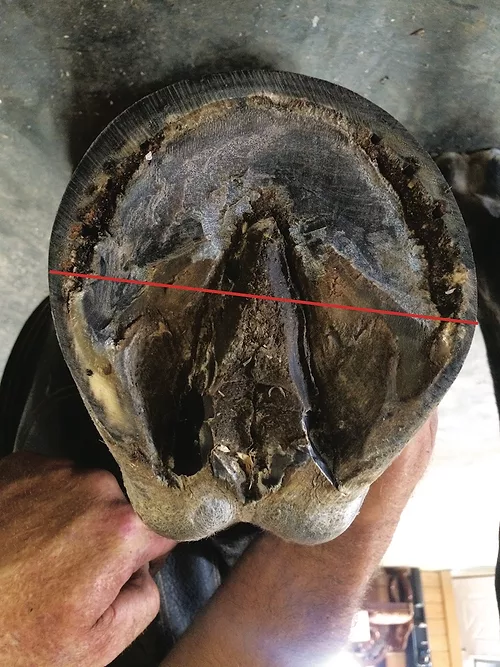Three decades ago, Hall of Fame farrier Dave Duckett offered Jim Quick some sage advice.
“He told me, ‘When you walk up to a horse with an idea in your mind, remember that it’s your idea, not the horse’s,’” recalls the Niwot, Colo., farrier. “Looking back, I think I wrecked horses’ feet for years, and I don’t like it.”
With that in mind, Quick suggests taking a closer look at the feet when evaluating them and consider the reason for their shape. For example, the widest part of the foot is not necessarily perpendicular to the centerline like the frog. It will be off a little bit because most horses are slightly pigeon-toed. The widest part of the foot will always be perpendicular to the horse’s spine, he says.
“Don’t push the quarters around and force the hoof wall to do something else,” Quick urges. “If you do push the quarters around and then use a straight edge to check whether the hoof wall is straight, it won’t be because you robbed it. The quarters aren’t straight across from each other and I don’t believe they should be.”
Although you have removed the flare and distortion, achieved anterior-posterior and medial-lateral balance and the length is right, you might not be as pleased with how the foot looks. However, the horse will be better for it.
“I’m looking at a foot that’s asymmetrical,” he says. “The quarters aren’t straight across from one another. The feet don’t look as good. They don’t look like the classic fronts and hinds like they used to, but my horses are sound and their feet are definitely held together better.”
For more insight from Jim Quick, read “Your Number 1 Job: Balance the Horse” in the July/August 2019 issue of American Farriers Journal.








